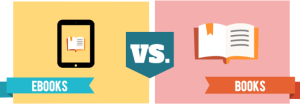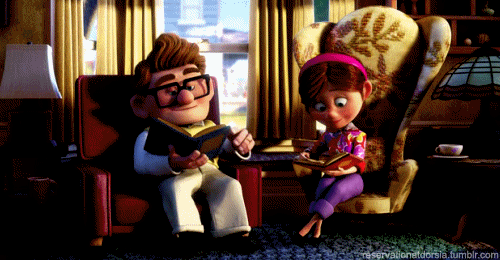
In a society where nearly every topic of discussion becomes tainted by unnecessary debate and polarization, the argument for/against smart devices or physical books must not lose sight of the main goal: diverse reading and increased literacy.
4 July 2016 – I’ve seen this discussion spring up multiple times across social media networks and in my own conversations with book aficionados, and felt the need to weigh in on this topic.

Full disclosure: I read books: actual literature and nonfiction in hard cover or paperback form. I’ve downloaded several samples of e-books on my smart devices, I simply couldn’t commit to a full purchase; reason being – I utilize a MacBook Pro and iPhone 6S+ (sometimes simultaneously) every day, which wears on my eyes, and on both devices, I keep the screen brightness dimmed to a tame level. And despite the global recognition by extensive global research regarding the negative health effects of artificial light on humans when using these devices in bed (read ‘Apple’s “Night Shift” Mode: How Smartphones Disrupt Sleep’ via Scientific American), I still have a tendency to do so. This habit – and the use of my devices in general for a prolonged period of time – has resulted in easily triggered migraines. Thus, my opinion on this topic is biased to a degree.
Rather than taking a pros and cons approach to this, let’s be honest: the e-book trend is not a trend at all; it’s a natural progress of the human mind to access more readily available information about the world around them (internet) and compartmentalize their favorite collection of literature or stories they identify with (e-readers).
“I do not believe that all books will or should migrate onto screens: as Douglas Adams once pointed out to me, more than 20 years before the Kindle showed up, a physical book is like a shark. Sharks are old: there were sharks in the ocean before the dinosaurs. And the reason there are still sharks around is that sharks are better at being sharks than anything else is. Physical books are tough, hard to destroy, bath-resistant, solar-operated, feel good in your hand: they are good at being books, and there will always be a place for them.”
― Neil Gaiman
But let’s get the negatives out of the way: screen time and its affects on our health – no matter the age of the user – is a byproduct of technological progress that wasn’t taken into consideration before it was implemented into our society. Not all traditional literature can be found in digital form, limiting a reader’s ability to explore older content when relying on downloadable titles. Those being the most significant issues, other negative impacts are a device’s other features/apps which can distract the reader; however, I believe that responsibility falls on the parent to monitor screen time, remove these distractions from the device, or simply make it a point to read alongside their child.
E-Books: When Less Is More
- Portability/storage of a large volume of literature, which conserves space when traveling
- Deletable and downloadable almost instantaneously (and simultaneously)
- Digital library available to browse and tailored by interest, author, etc.
- Shareable with others around the world via social media networks
- Read and review for others to benefit from varied opinions/diversity
- Adjustable text size, line spacing, illuminated screen for easier readability (modified formatting)
- Appeal to younger readers whose interest in electronic devices/technology act as a form of segue to various applications (i.e. reading, Reading Rainbow)
- Targeted learning based on a child’s ability; expanding vocabulary and literacy
- Ability to zoom in on unfamiliar words, explore related content via hyperlinks, and improve fine-motor skills through touchscreen interactivity
- Engaging and animated visuals that enhance the reading experience, further relating back to the story/content
Paperback Books: All About The Feels
It’s a tactile sensory experience. The hands-on aspect of traditional books offers the scent of its pages, pleasing aesthetic of its cover and feeling of holding onto it as an object that carries with it a unique personality.
“The implicit feel of where you are in a physical book turns out to be more important than we realized,” says Abigail Sellen of Microsoft Research Cambridge in England and co-author of The Myth of the Paperless Office. “Only when you get an e-book do you start to miss it. I don’t think e-book manufacturers have thought enough about how you might visualize where you are in a book.”
- From The Reading Brain in the Digital Age: The Science of Paper versus Screens (Scientific American, 2013)
Gifting a traditional book to someone is a much more visceral, hand to hand experience than purchasing a digital gift certificate or the e-book for them. Wrapping a gift, experiencing that person unwrapping it, and discussing a body of work while it sits alongside you gives the book a character and inclusion into the relationship such as the setting of a film can take on a role of its own in a film or play. To this end, physical literature connects us in social atmospheres such as libraries and bookstores; which also contribute to small businesses via local booksellers.
It’s passively suggested that an e-reader device allows a person to “take an entire library with you”, which, in my opinion, overlooks why libraries are so essential to human civilization in the first place.
“When you read on paper you can sense with your fingers a pile of pages on the left growing, and shrinking on the right,” the lead researcher, Anne Mangen, of Norway’s Stavanger University, told the Guardian. “You have the tactile sense of progress … Perhaps this somehow aids the reader, providing more fixity and solidity to the reader’s sense of unfolding and progress of the text, and hence the story.”
There’s an ambiance and romanticism our species has with literature. As I previously mentioned, the scent of book covers, pages, and spaces in between trigger neurological stimulation through nostalgia: what the library or bookstore smelled like as well as the geospatial idiosyncrasies of its interior design and layout; the social atmosphere and vibe you may or may not felt while there, whom you spoke with (or didn’t), the character of that particular environment marked by the small sights and sounds you may have experienced but with which your brain filed away as unimportant at the time, since your directive may have been focused on well, ‘books’. When you hold a book in your hand, it speaks to you the way other objects simply do not. When you carry a book with you, whether in a carrying bag or your vehicle, you carry with you a time machine capable of connecting you with a past experience as well as the experience the content of the book contains as well.

When someone is reading on their e-device, the casual observer or passerby (without peeking over their shoulder) has no clue as to whether that person is in mid conversation with someone via text/chat, browsing an article/social media outlet, internet binging, working, or reading. And if said person is reading, their chosen literature is closed off to others, hidden behind a digital screen.
“Books are no more threatened by Kindle than stairs by elevators.”
― Stephen Fry
For all the “don’t-bother-me-I’m-reading” memes to communicate our devotion to literature rather than interacting with people while we’re immersed in reading, books speak volumes about us (pun intended). The content a person is reading communicates that person’s interests, personality, intellect, sense of humor, an entire range of personality traits have the potential to be embodied in and communicated through unspoken, non-verbal cues from a paperback book cover. When someone approaches you based off of this kind of engagement, it’s the kind of attention that can start genuine conversations which may have implications beyond what you could’ve possibly expected, all due to your choice of literature form. Offering an intimate glimpse into ourselves, books bring people together.

Also, I don’t know about you, but committing to a single book at a time is enthralling and finishing that book before moving onto the next is satisfying. Having a surplus of digital material at my fingertips to access is not the most healthy option for me, personally, because my anxiety wants to devour several titles at once; whereas keeping one book on me at a time reinforces patience, pace, devoted attention to that particular content. When it comes to choosing a literary conduit, it’s traditional books, every time. As a humble collector of physical literature, I view my own library as a collection of wisdom at my disposal to share with others through donation, or, in my sons’ case, an embodiment of their father through inheritance upon my passing.

No matter what we prefer individually, I’m confident we can all agree that when it comes to children in the post-internet/smart device era, the utilization of both media forms is key: it’s all about balance. We want to encourage former childhood readers to engage through the most flexible and convenient means for them; maintain confidence and commitment to keeping literature in the lives of existing avid readers; and beyond having an understanding and respect for the historical significance of literature itself, encourage young minds to be excited about reading and learning.
